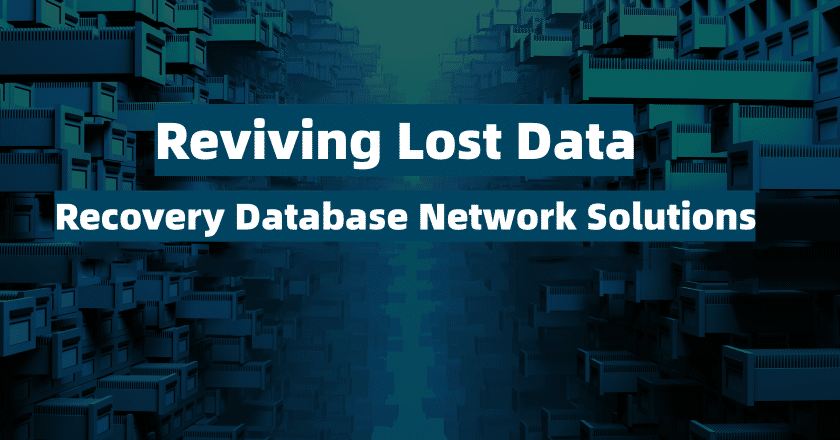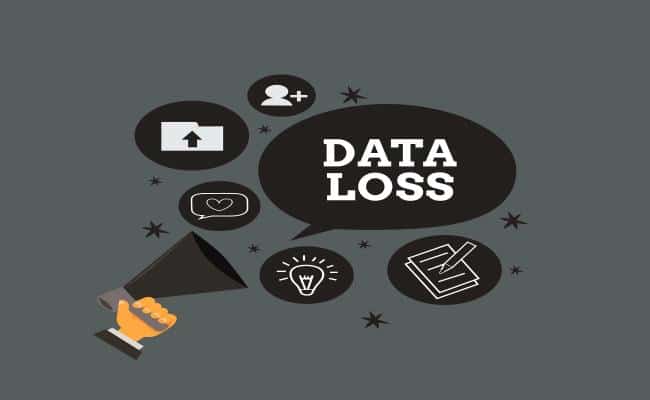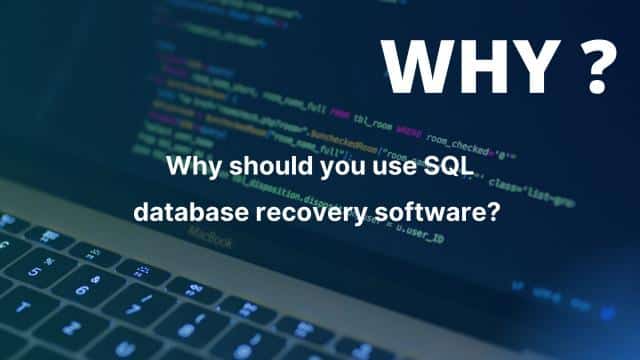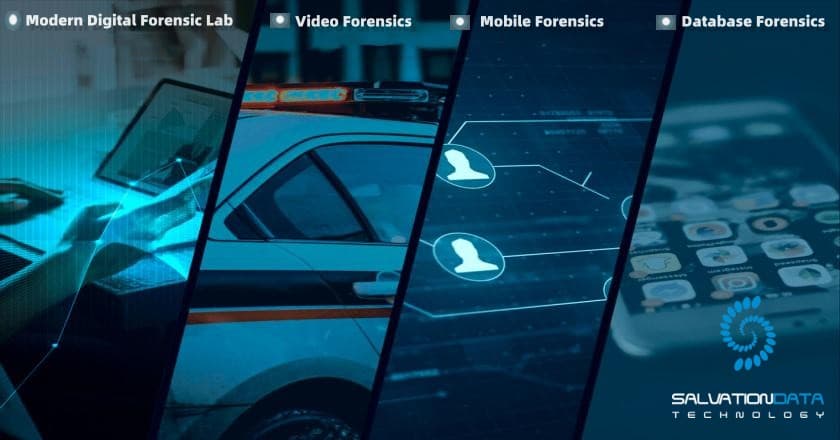How to Recover Lost Data with Recovery Database Network Solutions?

-
Content
- Introduction
- Understanding Recovery Database Networks
- Challenges in Data Recovery
- Strategies for Data Revival
- Real-world Applications and Case Studies
- Future Trends and Innovations
- Conclusion
-
Content
- Introduction
- Understanding Recovery Database Networks
- Challenges in Data Recovery
- Strategies for Data Revival
- Real-world Applications and Case Studies
- Future Trends and Innovations
- Conclusion
Introduction
In today’s digital age, data is unequivocally the backbone of industries worldwide. Among the myriad of mechanisms designed to safeguard this invaluable asset, the concept of a recovery database network stands out as a cornerstone in data protection and restoration strategies. A recovery database network is a sophisticated syste m that ensures the safety, integrity, and availability of data across various networked databases by implementing rigorous database backup and recovery protocols. This system is not merely a failsafe against potential data loss scenarios; it is an essential infrastructure component that enables organizations to swiftly recover from database disruptions, ranging from minor technical glitches to severe database attacks.
Exploring the depths of recovery database networks is crucial for understanding how modern businesses can defend against the ever-growing threats to their data. In an era where digital evidence and forensics cyber security play pivotal roles in both legal and business landscapes, the resilience provided by these networks is indispensable. The importance of delving into recovery database networks extends beyond mere data protection; it encompasses the ability to maintain business continuity, comply with database security regulations, and ultimately, ensure the trust of customers and stakeholders in the digital ecosystem.
Understanding Recovery Database Networks
1. Components and Architecture
A recovery database network well thought-out architecture, made up of several essential parts, is its core. The major databases, which are the heart of this system, are continuously backed up and monitored to guarantee data availability and integrity. Backup servers are essential because they regularly store copies of the data to protect against loss. Replication modules provide resilience against natural catastrophes by ensuring that data is duplicated across many locations. In the event of a catastrophic catastrophe, disaster recovery sites provide a fail-safe that allows for the complete restoration of the system. This well-organized framework guarantees that data is both safe and easily accessible when required.
2. Comparison with Traditional Backup Methods
Traditional backup methods, while useful, often fall short in providing the comprehensive protection that recovery database networks offer. Where traditional backups might occur on a daily or weekly basis, recovery database networks employ continuous data replication and real-time backup strategies. This difference means that, unlike traditional methods that can leave recent data unprotected, recovery database networks minimize data loss by ensuring that every transaction is captured. Furthermore, traditional methods typically involve longer recovery times, whereas recovery database networks are designed for rapid restoration, greatly reducing downtime and operational disruptions. Recovery database networks are a crucial part of current data security methods because of this cutting-edge method, which not only guarantees data integrity but also accommodates the changing demands of contemporary digital environments.
Challenges in Data Recovery
1. Common Causes of Data Loss
When engaging in data management, organizations frequently confront a multitude of challenges that have the potential to result in substantial data loss. Hardware failures, in which critical data is erased due to physical injury to storage devices, may give rise to such incidents. System failures and software malfunctions, such as corrupted files, serve to intensify the potential danger. Human error continues to be a widespread factor, encompassing inadvertent deletions as well as improper management of data resources. Moreover, cyber threats that exploit vulnerabilities, such as database attacks and malware infections, pose an ever-present risk. Natural disasters, despite being less frequent, have the potential to cause severe data loss, highlighting the numerous obstacles that organizations must overcome in order to safeguard their digital assets.
2. Implications of Data Loss in Network Environments
Data loss in network contexts has far-reaching consequences. Businesses risk sensitive information breaches that compromise digital evidence and proprietary data, in addition to the immediate interruption to operations. Such occurrences may have long-term negative financial effects by undermining consumer confidence and harming one’s reputation. Legal repercussions are another possibility, especially if data loss violates digital forensics and database security compliance guidelines. Because network settings are linked, losing data may have a domino effect, affecting dependent systems and processes in addition to the source.
3. Need for Effective Recovery Strategies
In light of these difficulties, the need of resilient recovery database networks becomes evident. Recoverable recovery plans are essential to contemporary data management; they are not only a backup plan. Comprehensive database backup and recovery techniques, such as frequent backups, data replication, and the use of dfir tools for incident response, must be included in these methods. Preventive steps, such educating staff members on data management and allocating funds for cybersecurity protections to lessen the likelihood of database assaults, are just as crucial. Ultimately, to successfully negotiate the challenges of data recovery in today’s digital ecosystem, a multifaceted strategy combining prevention, detection, and recovery is necessary.
Strategies for Data Revival
1. Backup and Restoration Techniques
SQL Database Recovery – Highlighting the significance of recovery solutions for relational databases, the discussion can focus on the necessity of implementing reliable SQL database recovery practices to maintain the integrity and uptime of SQL server environments.
Repair MySQL Database – Addressing the specific challenges associated with the widely-used MySQL database, the article can elaborate on strategies to repair MySQL database issues effectively, ensuring the smooth operation of web-based applications and services.
2. Disaster Recovery Planning
The cornerstone of robust data revival strategies lies in comprehensive disaster recovery planning. Such plans are not static documents but dynamic frameworks that evolve in tandem with organizational growth and technological advancements. Key components include clearly defined recovery objectives, such as Recovery Time Objectives (RTOs) and Recovery Point Objectives (RPOs), which set benchmarks for acceptable downtime and data loss.
Roles and duties are clearly defined in a comprehensive disaster recovery plan, which guarantees that team members are aware of their obligations in an emergency. Protocols for internal and external communications are established by communication strategies, which are essential for preserving trust and openness. To ensure that the plan is prepared for a variety of situations and to identify areas for improvement, it is also regularly tested via drills and simulations.
3. Compliance and Security Measures
Compliance and security procedures must be followed at all times in the current regulatory climate. Tight data security and privacy policies are required by laws like GDPR and HIPAA, therefore disaster recovery plans must take compliance into account. Encryption, access limits, and frequent security audits are examples of database security measures that should be implemented. These methods protect against database assaults and guarantee regulatory compliance.
Furthermore, fostering a culture of security awareness among employees may dramatically lower the possibility of human error-related data breaches. Employees are empowered to serve as the first line of defense thanks to training programs and frequent updates on recent cyber security trends. These measures reinforce the organization’s dedication to data protection and supplement technology protections.
Real-world Applications and Case Studies
1. Successful Data Recovery Stories
Success stories that demonstrate people’s inventiveness and resiliency in the face of data loss pepper the landscape of data recovery. A prominent instance pertains to a sizable financial establishment that had a disastrous server malfunction. They ensured company continuity and consumer confidence by restoring critical financial data with little downtime by using an advanced recovery database network.
Another example comes from the medical field, when patient data were encrypted by a ransomware assault that affected a hospital. Patient privacy and essential healthcare services were protected as they quickly recovered encrypted data without giving in to ransom demands because of their strong backup and disaster recovery strategy, which included frequent database backup and recovery operations.
A standout case from SalvationDATA showcases their expertise in digital forensics and database forensics. When a multinational corporation suffered a massive data breach, resulting in significant data loss, SalvationDATA’s cutting-edge tools and methodologies were instrumental in not only recovering the lost data but also in identifying the breach’s source, significantly enhancing the corporation’s database security measures against future attacks.
2. Lessons Learned from Data Recovery Failures
On the other hand, data recovery failures may teach us just as much. The underestimate of the significance of frequent, thorough backups is one recurring topic. Longer recovery durations and more data loss resulted from organizations that often failed to test their restoration procedures or did not perform frequent enough backups.
Making constant improvements to disaster recovery strategies is another important lesson. Unchanged strategies that do not adapt to the ever-evolving technology environment and new dangers are less successful, as failures have shown. These mistakes highlight the need of flexible tactics, frequent cyber-forensics training, and investments in cutting-edge technology and techniques.
Future Trends and Innovations
1. Emerging Technologies in Data Recovery
The field of data recovery is about to undergo a radical change as new technology open the door to more effective and durable solutions. Leading the way are Artificial Intelligence (AI) and Machine Learning (ML), which provide predictive analytics to anticipate and detect any data loss events before they happen. Additionally, by customizing backup and restoration strategies to each organization’s specific requirements and risk profile, these solutions may improve these strategies.
With its built-in data integrity and security capabilities, blockchain technology offers yet another exciting direction. Blockchain can improve recovery database network openness and reduce the danger of centralized data breaches by decentralizing data storage.
2. Predictions for the Future of Recovery Database Networks
Recovery database networks are anticipated to become more automated, intelligent, and integrated in the future. By automating the backup and recovery procedures, operational downtime and human error will be minimized. Meanwhile, new capabilities for data validation and fraud prevention will be introduced, along with increased security and efficiency, when AI and blockchain are integrated into recovery database networks.
Recovery database networks will be further impacted by the development of cloud technologies, which provide scalable and adaptable solutions to the ever-increasing amounts of data and the ever-changing nature of contemporary corporate settings. By doing this, recovery database networks will be kept on the leading edge of technology and prepared to take on new difficulties in the future.
In short, technology is going to improve the efficiency, security, and robustness of recovery database networks, which will allow enterprises to keep safeguarding their most important asset—data. As a result, the future of data recovery is bright.
Conclusion
As we reflect on the journey of recovery database networks, it’s clear that the landscape of data protection and recovery has undergone significant evolution. From the early days of simple backup solutions to today’s sophisticated networks that integrate cutting-edge technologies like AI, blockchain, and cloud computing, the progress has been remarkable. These advancements have not only enhanced the resilience and efficiency of data recovery strategies but also redefined what’s possible in terms of data protection.
To sum up, the development of recovery database networks is a reflection of the growing importance of data in our digital age and the consequent need for cutting edge methods for safeguarding and retrieving this essential asset. As time goes on, recovery database networks’ ongoing innovation will be essential to giving enterprises the confidence and agility to handle the difficulties of data management and security.






